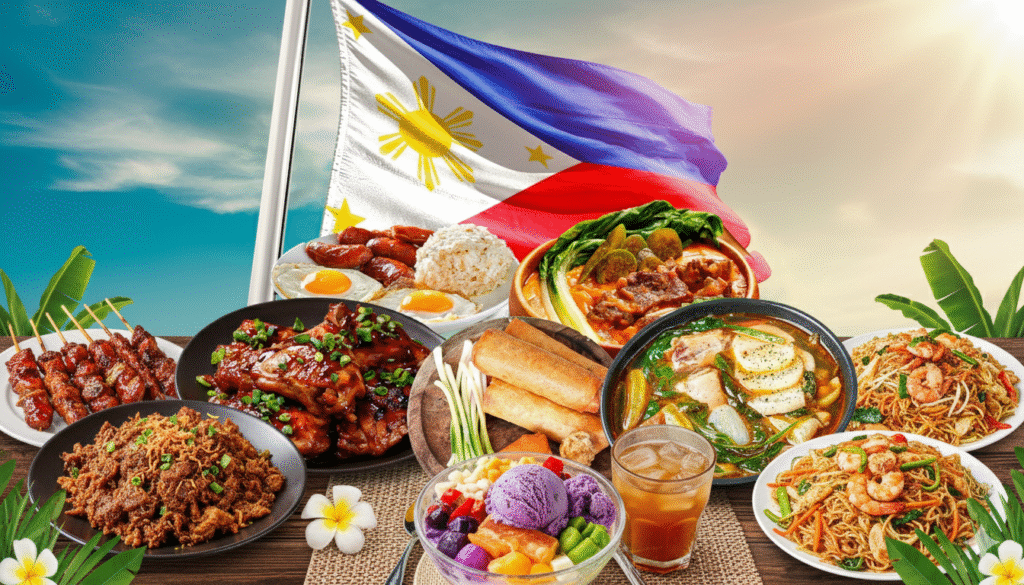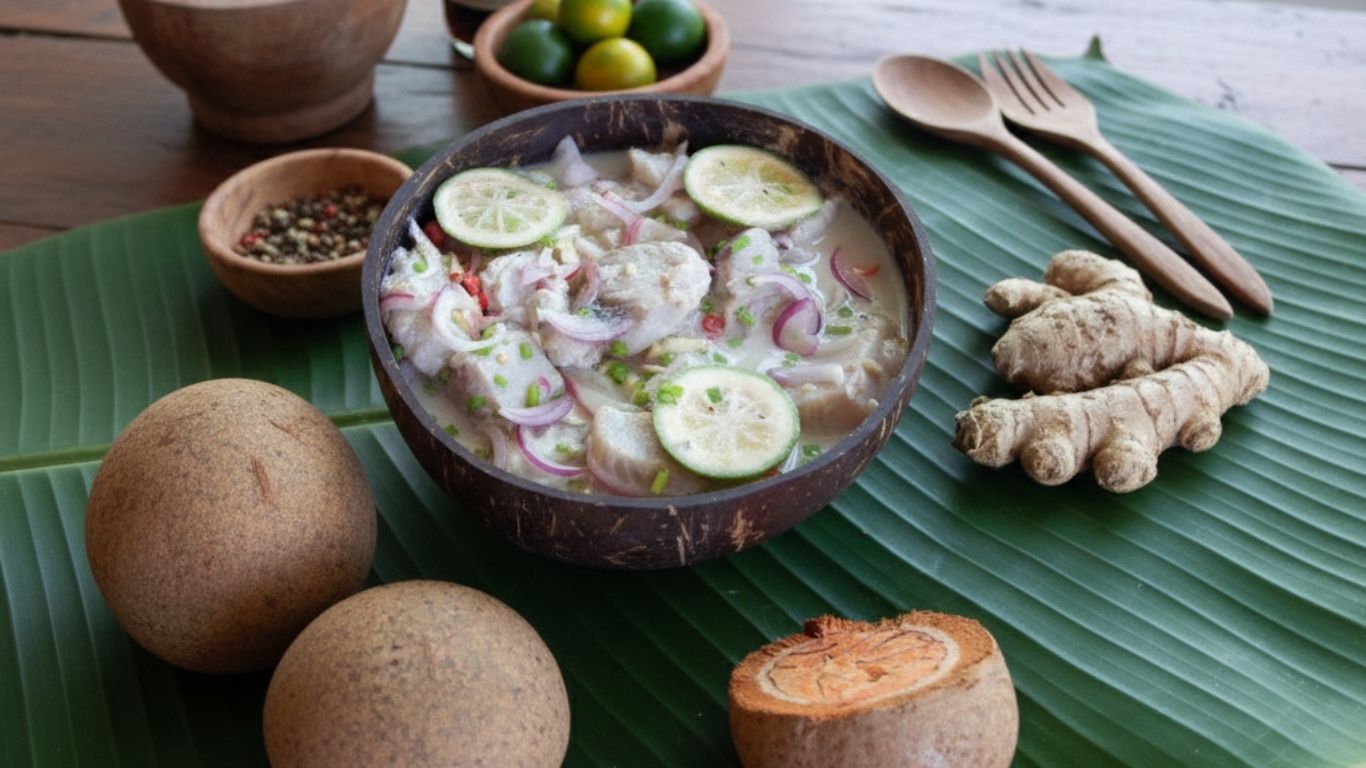
Bringing Filipino Comfort Food to the Streets and to Your Table
Filipino food is soulful, bold, and deeply comforting, and for many of us, it’s a taste of home. Whether it’s the tang of chicken adobo, the sweet-and-savory joy of longganisa, or the creamy purple magic of ube, these flavors are woven into our childhood memories and weekend family meals.
But Filipino food isn’t just for the home anymore — it’s ready for the spotlight.
Our mission is to take the warmth of traditional Filipino dishes and reimagine them for today’s world — whether that’s a food truck in Longmont, a meal prep kit for busy families, or a frozen lumpia pack ready to fry on demand.
We believe in honoring the classics, but we’re not afraid to innovate. Think adobo rice bowls, ube crinkle cookie boxes, and tapsilog breakfast burritos — all made with heart, all made to share.
At the end of the day, it’s more than food. It’s culture. It’s comfort. And it’s time everyone got a taste.
– Chef Allenjone
Culinary Creator | Filipino Food Advocate

Why I Make Kinilaw with Tabon-tabon (Atuna excelsa subsp. racemosa)
Filipino food has always been a part of who I am. It’s more than just cooking — it’s how I stay connected to my roots, especially my family’s home in Northern Mindanao.
One dish that means the most to me is kinilaw — fresh fish marinated in vinegar, calamansi, ginger, onion, and chili. It’s often called “Filipino ceviche,” but that doesn’t quite capture its soul. Especially not the way we make it in Mindanao.
What sets our version apart is a unique ingredient: tabon-tabon, a local tropical fruit. When grated into the kinilaw, it removes the “lansa” (fishy aftertaste) and brings a clean, earthy flavor. It’s not something you’ll find in every kitchen — and that’s exactly why I use it. It tells a story.
As a chef and creative, I aim to share bold, regional Filipino flavors without diluting them. Dishes like kinilaw with tabon-tabon remind me that food is culture — and that there’s power in preserving the small details.
This blog is part of my culinary journey, rooted in heritage and driven by the desire to share what I know and love.
– Chef Allenjone
Culinary Creator | Filipino Food Advocate

Life as a Filipino Chef in the Galley: Norwegian Epic
Working as a chef onboard the Norwegian Epic was more than just cooking—it was endurance, adaptability, and discipline rolled into 12-hour days. Every shift meant serving thousands of guests, with the galley in constant motion: knives chopping, pans sizzling, trays rushing in and out like clockwork. But on a moving ship, nothing was ever as simple as it seemed.
When the seas grew rough, the galley transformed. We had to prepare the kitchen for the ocean’s unpredictability: Saran Wrap stretched tightly over every counter to stop ingredients from flying, tables and chairs locked into position, and every appliance strapped down so it wouldn’t turn into a dangerous projectile if the ship rocked and listed. Even then, we had to keep cooking—steadying ourselves as we plated dishes, trying not to throw up while the ship rolled slowly back into balance.
The hours were long, the pressure unrelenting, but the experience was also a masterclass. Every day gave me the chance to refine techniques, especially the classical French methods that are the foundation of professional cooking—sauces, stocks, braising, roasting. Those fundamentals became second nature, no matter what cuisine we were preparing.
Outside of work, life was just as unique. Living quarters were small, often shared, with little privacy but plenty of camaraderie. My cabin mates became brothers in arms—sharing snacks, stories, and laughter that helped balance out the fatigue of endless shifts.
It wasn’t easy. Some days, it felt like the sea was working against us, testing our balance and our patience. But there was also pride in every service we pulled off. I carried my Filipino roots into that galley, sharing flavors of Mindanao, while learning Indian curries, Italian sauces, and American classics from colleagues. Together, we turned a swaying ship into a global kitchen.
The work was exhausting, but the rewards were unforgettable: sunsets on the open sea after service, guests smiling over their meals, and the knowledge that we had made the impossible possible—every single day.
— Chef Allenjone
Culinary Creator/Filipino Food Advocate

Fix Dessert Chocolatier Bar: How Social Media Influence Boosted Its Success
Fix Dessert Chocolatier’s chocolate bar shows how online platforms can help a local business become a global trend. Sarah Hamouda, a British-Egyptian entrepreneur based in Dubai, created the bar in 2020 to satisfy her cravings during pregnancy. The product blended rich European chocolate with Middle-Eastern cultures. (Deeplata) It gained much popularity after a TikTok influencer posted an ASMR video eating the Fix “Can’t Get Knafeh of It” bar, which quickly went viral and brought international attention to Hamouda’s creation. (Blair)
Social media helped Fix Dessert Chocolatier reach an international audience, but it also brought challenges like shipping issues and imitators. The brand’s story shows both the benefits and drawbacks of going viral in today’s food industry.
Sarah Hamouda started her brand to bring new and trendy chocolate treats to Dubai, offering something different from regular chocolate bars. Her creation combined layers of kadayif, pistachio cream, tahini, and premium chocolate, topped with crushed pistachios. The unique flavors and textures made it stand out. Although she first aimed at Dubai customers, the bar soon gained global attention.
It was in 2023 when a TikTok influencer posted an ASMR-style video of Fix’s “Can’t Get Knafeh of It” bar. The mix of sound, texture, and visually satisfying appeal struck a strong resonance with an audience of millions within days, igniting a digital trend carried over to Instagram and YouTube (Blair). Social media influencers helped to enhance the product’s allure, as they frequently presented it as a luxurious symbol of Dubai’s go-big culture. Several scholars have noted that food videos which emphasize visual and sensory elements, such as ASMR; enhance viewer engagement by stimulating the senses and evoking desire. (Prada) Hamouda’s chocolate embodied this dynamic, which further turned a local delicacy into a globally recognized product.
Despite the growing international interest in Fix Dessert Chocolatier, the company encountered several structural challenges. The chocolate bars required constant refrigeration and careful handling to prevent contamination and preserve quality. Hence, exportation is complicated, particularly to high-demand markets such as the United States. Although the business rapidly expanded from a single employee to a workforce of over fifty people, it remained unable to meet global demand. (Garde) This shortfall opened an opportunity for imitation products to emerge, posing a serious threat to the brand’s authenticity and market control. These imitations were widely distributed online and in local markets, often without proper recognition of the creator’s original work. Scholars have characterized this phenomenon as a case of “viral diffusion without brand control,” wherein imitators capitalize on unmet demand in the absence of effective brand governance. (Kozinet)
Hamouda’s story highlights the double-edged nature of going viral in the food industry. Platforms like TikTok can boost a brand’s profile, but they also make small businesses more vulnerable to imitation. Food entrepreneurs should strike a balance between creativity and strategic approaches, such as trademarking, partnerships, or careful expansion, to protect their ideas. The Fix Dessert Chocolatier case reflects wider trends in digital marketing, showing that while multisensory online content attracts consumers, long-term success depends on being able to scale and keep the brand authentic. (Tuten and Solomon)
— Chef Allenjone
Culinary Creator | Filipino Food Advocate